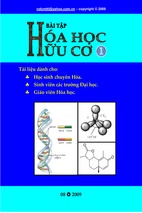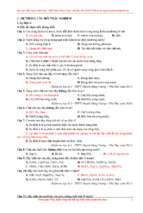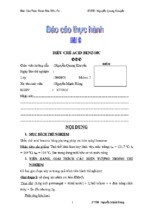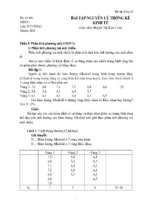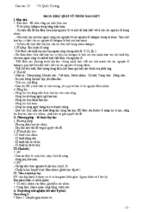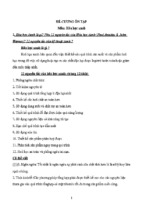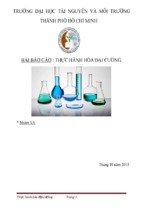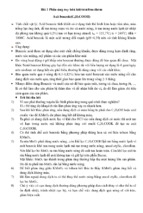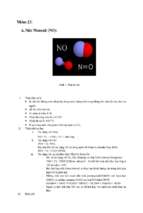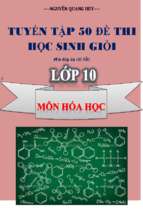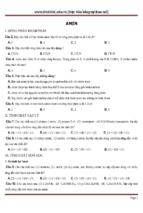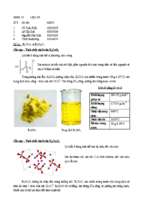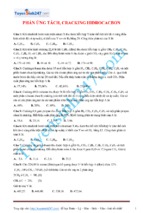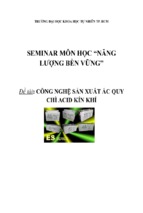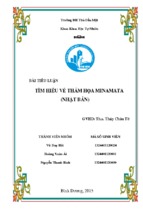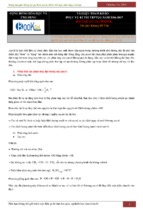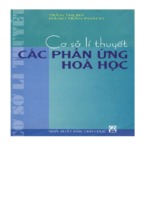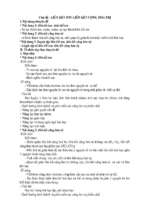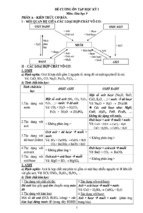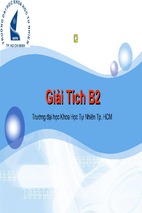THE ART OF DRUG
SYNTHESIS
THE ART OF DRUG
SYNTHESIS
Edited by
Douglas S. Johnson
Jie Jack Li
Pfizer Global Research and Development
Copyright # 2007 by John Wiley & Sons, Inc. All rights reserved.
Published by John Wiley & Sons, Inc., Hoboken, New Jersey
Published simultaneously in Canada
No part of this publication may be reproduced, stored in a retrieval system, or transmitted in any
form or by any means, electronic, mechanical, photocopying, recording, scanning, or otherwise,
except as permitted under Section 107 or 108 of the 1976 United States Copyright Act, without
either the prior written permission of the Publisher, or authorization through payment of the
appropriate per-copy fee to the Copyright Clearance Center, Inc., 222 Rosewood Drive, Danvers,
MA 01923, (978) 750-8400, fax (978) 750-4470, or on the web at www.copyright.com.
Requests to the Publisher for permission should be addressed to the Permissions Department,
John Wiley & Sons, Inc., 111 River Street, Hoboken, NJ 07030, (201) 748-6011,
fax (201) 748-6008, or online at http://www.wiley.com/go/permission.
Limit of Liability/Disclaimer of Warranty: While the publisher and author have used their best
efforts in preparing this book, they make no representations or warranties with respect to
the accuracy or completeness of the contents of this book and specifically disclaim any implied
warranties of merchantability or fitness for a particular purpose. No warranty may be created
or extended by sales representatives or written sales materials. The advice and strategies contained
herein may not be suitable for your situation. You should consult with a professional where
appropriate. Neither the publisher nor author shall be liable for any loss of profit or any
other commercial damages, including but not limited to special, incidental, consequential,
or other damages.
For general information on our other products and services or for technical support, please
contact our Customer Care Department within the United States at (800) 762-2974,
outside the United States at (317) 572-3993 or fax (317) 572-4002.
Wiley also publishes its books in a variety of electronic formats. Some content that appears in print
may not be available in electronic formats. For more information about Wiley products, visit
our web site at www.wiley.com.
Wiley Bicentennial Logo: Richard J. Pacifico
Library of Congress Cataloging-in-Publication Data:
The art of drug synthesis / edited by Douglas S. Johnson and Jie Jack Li.
p. cm.
Includes bibliographical references and index.
ISBN 978-0-471-75215-8 (cloth)
1. Drugs—Design. 2. Pharmaceutical chemistry. I. Johnson, Douglas S. (Douglas Scott),
1968- II. Li, Jie Jack.
[DNLM: 1. Drug Design. 2. Chemistry, Pharmaceutical—methods. QV 744 A784 2007]
RS420.A79 2007
6150 .19--dc22
2007017891
Printed in the United States of America
10 9 8
7 6
5 4
3 2
1
CONTENTS
Foreword
Preface
Contributors
1
2
xi
xiii
xv
THE ROLE OF MEDICINAL CHEMISTRY IN DRUG DISCOVERY
John A. Lowe, III
1
1.1 Introduction
1.2 Hurdles in the Drug Discovery Process
1.3 The Tools of Medicinal Chemistry
1.3.1 In Silico Modeling
1.3.2 Structure-Based Drug Design (SBDD)
1.4 The Role of Synthetic Chemistry in Drug Discovery
References
1
2
3
3
4
6
7
PROCESS RESEARCH: HOW MUCH? HOW SOON?
Neal G. Anderson
2.1 Introduction
2.2 Considerations for Successful Scale-up to Tox Batches
and Phase I Material
2.3 Considerations for Phase 2 Material and Beyond
2.3.1 Reagent Selection
2.3.2 Solvent Selection
2.3.3 Unit Operations
2.3.4 Developing Simple, Effective, Efficient Work-ups and Isolations
2.3.5 The Importance of Physical States
2.3.6 Route Design and Process Optimization to Minimize COG
2.4 Summary
References
11
11
15
16
16
18
19
22
23
24
26
26
I CANCER AND INFECTIOUS DISEASES
3
AROMATASE INHIBITORS FOR BREAST CANCER: EXEMESTANE
(AROMASINâ), ANASTROZOLE (ARIMIDEXâ), AND LETROZOLE
(FEMARAâ)
Jie Jack Li
3.1 Introduction
3.2 Synthesis of Exemestane
3.3 Synthesis of Anastrozole
3.4 Synthesis of Letrozole
References
31
32
35
36
37
38
v
vi
CONTENTS
4
QUINOLONE ANTIBIOTICS: LEVOFLOXACIN (LEVAQUINâ),
MOXIFLOXACIN (AVELOXâ), GEMIFLOXACIN (FACTIVEâ),
AND GARENOXACIN (T-3811)
Chris Limberakis
4.1 Introduction
4.1.1 Mechanism of Action
4.1.2 Modes of Resistance
4.1.3 Structure – Activity Relationship (SAR) and Structure – Toxicity
Relationship (STR)
4.1.4 Pharmacokinetics
4.1.5 Synthetic Approaches
4.2 Levofloxacin
4.3 Moxifloxacin
4.4 Gemifloxacin
4.5 Garenoxacin (T-3811): A Promising Clinical Candidate
References
5
TRIAZOLE ANTIFUNGALS: ITRACONAZOLE (SPORANOXâ),
FLUCONAZOLE (DIFLUCANâ), VORICONAZOLE (VFENDâ),
AND FOSFLUCONAZOLE (PRODIFâ)
Andrew S. Bell
5.1 Introduction
5.2 Synthesis of
5.3 Synthesis of
5.4 Synthesis of
5.5 Synthesis of
References
6
7
Itraconazole
Fluconazole
Voriconazole
Fosfluconazole
NON-NUCLEOSIDE HIV REVERSE TRANSCRIPTASE
INHIBITORS
Arthur Harms
6.1 Introduction
6.2 Synthesis of Nevirapine
6.3 Synthesis of Efavirenz
6.4 Synthesis of Delavirdine Mesylate
References
39
40
43
44
44
45
46
47
57
60
64
66
71
72
74
76
77
80
81
83
84
85
87
90
92
NEURAMINIDASE INHIBITORS FOR INFLUENZA: OSELTAMIVIR
95
PHOSPHATE (TAMIFLUâ) AND ZANAMIVIR (RELENZAâ)
Douglas S. Johnson and Jie Jack Li
7.1 Introduction
95
7.1.1 Relenza
97
7.1.2 Tamiflu
97
99
7.2 Synthesis of Oseltamivir Phosphate (Tamifluâ)
110
7.3 Synthesis of Zanamivir (Relenzaâ)
References
113
CONTENTS
vii
II
CARDIOVASCULAR AND METABOLIC DISEASES
8
PEROXISOME PROLIFERATOR-ACTIVATED RECEPTOR
(PPAR) AGONISTS FOR TYPE 2 DIABETES
Jin Li
117
8.1 Introduction
8.1.1 Insulin
8.1.2 Sulfonylurea Drugs
8.1.3 Meglitinides
8.1.4 Biguanides
8.1.5 Alpha-Glucosidase Inhibitors
8.1.6 Thiazolidinediones
8.2 Synthesis of Rosiglitazone
8.3 Synthesis of Pioglitazone
8.4 Synthesis of Muraglitazar
References
117
118
119
119
119
120
120
121
122
124
125
ANGIOTENSIN AT1 ANTAGONISTS FOR
HYPERTENSION
Larry Yet
129
9.1 Introduction
9.2 Losartan Potassium
9.2.1 Introduction to Losartan Potassium
9.2.2 Synthesis of Losartan Potassium
9.3 Valsartan
9.3.1 Introduction to Valsartan
9.3.2 Synthesis of Valsartan
9.4 Irbesartan
9.4.1 Introduction to Irbesartan
9.4.2 Synthesis of Irbesartan
9.5 Candesartan Cilexetil
9.5.1 Introduction to Candesartan Cilexetil
9.5.2 Synthesis of Candesartan Cilexetil
9.6 Olmesartan Medoxomil
9.6.1 Introduction to Olmesartan Medoxomil
9.6.2 Synthesis of Olmesartan Medoxomil
9.7 Eprosartan Mesylate
9.7.1 Introduction to Eprosartan Mesylate
9.7.2 Synthesis of Eprosartan Mesylate
9.8 Telmisartan
9.8.1 Introduction to Telmisartan
9.8.2 Synthesis of Telmisartan
References
130
132
132
133
134
134
134
135
135
135
136
136
136
137
137
137
138
138
138
139
139
139
140
9
10
LEADING ACE INHIBITORS FOR HYPERTENSION
Victor J. Cee and Edward J. Olhava
143
10.1 Introduction
144
viii
CONTENTS
10.2 Synthesis
10.3 Synthesis
10.4 Synthesis
10.5 Synthesis
10.6 Synthesis
10.7 Synthesis
References
11
12
13
III
14
of
of
of
of
of
of
Enalapril Maleate
Lisinopril
Quinapril
Benazepril
Ramipril
Fosinopril Sodium
146
147
148
150
151
154
156
DIHYDROPYRIDINE CALCIUM CHANNEL BLOCKERS FOR
HYPERTENSION
Daniel P. Christen
159
11.1 Introduction
11.2 Synthesis of
11.3 Synthesis of
11.4 Synthesis of
11.5 Synthesis of
References
160
162
163
164
165
166
Nifedipine (Adalatw)
Felodepine (Plendilw)
Amlodipine Besylate (Norvascw)
Azelnidipine (Calblockw)
SECOND-GENERATION HMG-CoA REDUCTASE
INHIBITORS
Jeffrey A. Pfefferkorn
12.1 Introduction
12.2 Synthesis of Fluvastatin (Lescolw)
12.3 Synthesis of Rosuvastatin (Crestorw)
12.4 Synthesis of Pitavastatin (Livalow)
References
169
170
171
174
177
181
CHOLESTEROL ABSORPTION INHIBITORS: EZETIMIBE
(ZETIAâ)
Stuart B. Rosenblum
183
13.1 Introduction
13.2 Discovery Path to Ezetimibe
13.3 Synthesis of Ezetimibe (Zetiaâ)
References
183
184
187
195
CENTRAL NERVOUS SYSTEM DISEASES
DUAL SELECTIVE SEROTONIN AND NOREPINEPHRINE
REUPTAKE INHIBITORS (SSNRIs) FOR DEPRESSION
Marta Piñeiro-Núñez
14.1 Introduction
14.2 Synthesis of Venlafaxine
14.3 Synthesis of Milnacipran
14.4 Synthesis of Duloxetine
References
199
200
203
205
207
212
CONTENTS
15
GABAA RECEPTOR AGONISTS FOR INSOMNIA: ZOLPIDEM
(AMBIENâ), ZALEPLON (SONATAâ), ESZOPICLONE
(ESTORRAâ, LUNESTAâ), AND INDIPLON
Peter R. Guzzo
15.1 Introduction
15.2 Synthesis of
15.3 Synthesis of
15.4 Synthesis of
15.5 Synthesis of
References
16
17
ix
Zolpidem
Zaleplon
Eszopiclone
Indiplon
a2d LIGANDS: NEURONTINâ (GABAPENTIN) AND LYRICAâ
(PREGABALIN)
Po-Wai Yuen
16.1 Introduction
16.2 Synthesis of Gabapentin
16.3 Synthesis of Pregabalin
References
APPROVED TREATMENTS FOR ATTENTION DEFICIT
HYPERACTIVITY DISORDER: AMPHETAMINE (ADDERALLâ),
METHYLPHENIDATE (RITALINâ), AND ATOMOXETINE
(STRATERRAâ)
David L. Gray
17.1 Introduction
17.1.1 Stimulant versus Nonstimulants
17.2 Synthesis of Amphetamine
17.2.1 Pharmacokinetic Properties of d- and l-Amphetamine
17.2.2 Chiral Synthesis of Amphetamine
17.3 Synthesis of Methylphenidate
17.3.1 Methylphenidate Formulations
17.3.2 Chiral Synthesis of Methylphenidate
17.4 Synthesis of Atomoxetine
References
Index
215
216
217
219
220
221
223
225
225
227
234
239
241
242
242
244
246
246
247
249
250
253
257
261
FOREWORD
The discovery of efficacious new human therapeutic agents is one of humanity’s most vital
tasks. It is an enormously demanding activity that requires creativity, a vast range of scientific knowledge, and great persistence. It is also an exceedingly expensive activity. In an
ideal world, no education would be complete without some exposure to the ways in which
new medicines are discovered and developed. For those young people interested in science
or medicine, such knowledge is arguably mandatory.
In this book, Douglas Johnson, Jie Jack Li, and their colleagues present a glimpse
into the realities and demands of drug discovery. It is both penetrating and authoritative.
The intended audience, practitioners and students of medicinal and synthetic chemistry,
can gain perspective, wisdom, and valuable factual knowledge from this volume. The
first two chapters of the book provide a clear view of the many complexities of drug discovery, the numerous stringent requirements that any potential therapeutic molecule must
meet, the challenges and approaches involved in finding molecular structures that “hit” a
biological target, and the many facets of chemical synthesis that connect initial small-scale
laboratory synthesis with the evolution of a process for successful commercial production.
The remaining 15 chapters provide a wealth of interesting synthetic chemistry as applied
to the real world of the molecular medicine of cancer, infectious, cardiovascular, and
metabolic diseases. At the same time, each of these chapters illuminates the way in
which a first-generation therapeutic agent is refined and improved by the application of
medicinal chemistry to the discovery of second- and third-generation medicines.
The authors have produced a valuable work for which they deserve much credit. It is
another step in the odyssey of drug finders; a hardy breed that accepts the high-risk nature
of their prospecting task, the uncertainties at the frontier, and the need for good fortune, as
well as focus and sustained hard work. My ability to predict the future is no better than that
of others, but I think it is possible that a highly productive age of medicinal discovery lies
ahead, for three reasons: (1) the discovery of numerous important new targets for effective
disease therapy, (2) the increasing power of high-throughput screening and bio-target
structure-guided drug design in identifying lead molecules, and (3) the ever-increasing
sophistication of synthetic and computational chemistry.
E. J. COREY
xi
PREFACE
Our first book on drug synthesis, Contemporary Drug Synthesis, was published in 2004
and was well received by the chemistry community. Due to time and space constraints,
we only covered 14 classes of top-selling drugs, leaving many important drugs out. In preparing The Art of Drug Synthesis, the second volume in our series on “Drug Synthesis,” we
have enlisted 16 chemists in both medicinal and process chemistry, encompassing nine
pharmaceutical companies. Some authors were even intimately involved with the discovery of the drugs that they reviewed. Their perspectives are invaluable to the reader with
regard to the drug discovery process.
In Chapter 1, John Lowe details “The Role of Medicinal Chemistry in Drug
Discovery” in the twenty first century. The overview should prove invaluable to novice
medicinal chemists and process chemists who are interested in appreciating what medicinal chemists do. In Chapter 2, Neal Anderson summarizes his experience in process
chemistry. The perspectives provide a great insight for medicinal chemists who are not
familiar with what process chemistry entails. Their contributions afford a big picture of
both medicinal chemistry and process chemistry, where most of the readers are employed.
Following two introductory chapters, the remainder of the book is divided into three major
therapeutic areas: I. Cancer and Infectious Diseases (five chapters); II. Cardiovascular and
Metabolic Diseases (six chapters); and III. Central Nervous System Diseases (four
chapters).
We are grateful to Susan Hagen and Derek Pflum at Pfizer, and Professor John
Montgomery of the University of Michigan and his students Ryan Baxter, Christa
Chrovian, and Hasnain A. Malik for proofreading portions of the manuscript. Jared
Milbank helped in collating the subject index.
We welcome your critique.
DOUGLAS S. JOHNSON
JIE JACK LI
Ann Arbor, Michigan
April 2007
xiii
CONTRIBUTORS
Neal G. Anderson 7400 Griffin Lane, Jacksonville, Oregon
Andrew S. Bell Pfizer Global Research and Development, Sandwich, Kent, United
Kingdom
Victor J. Cee Amgen, Inc., Thousand Oaks, California
Daniel P. Christen Transtech Pharma, High Point, North Carolina
David L. Gray Pfizer Global Research and Development, Ann Arbor, Michigan
Peter R. Guzzo Albany Molecular Research, Inc., Albany, New York
Arthur Harms Bausch and Lomb, Rochester, New York
Douglas S. Johnson Pfizer Global Research and Development, Ann Arbor, Michigan
Jie Jack Li Pfizer Global Research and Development, Ann Arbor, Michigan
Jin Li Pfizer Global Research and Development, Groton, Connecticut
Chris Limberakis Pfizer Global Research and Development, Ann Arbor, Michigan
John A. Lowe, III Pfizer Global Research and Development, Groton, Connecticut
Edward J. Olhava Millennium Pharmaceuticals, Cambridge, Massachusettes
Jeffrey A. Pfefferkorn Pfizer Global Research and Development, Ann Arbor,
Michigan
Marta Piñeiro-Núñez Eli Lilly and Company, Indianapolis, Indiana
Stuart B. Rosenblum Schering-Plough Research Institute, Kenilworth, New Jersey
Larry Yet Albany Molecular Research, Inc., Albany, New York
Po-Wai Yuen Pfizer Global Research and Development, Ann Arbor, Michigan
xv
1
THE ROLE OF MEDICINAL
CHEMISTRY IN DRUG
DISCOVERY
John A. Lowe, III
1.1 INTRODUCTION
This volume represents the efforts of the many chemists whose ability to master both
synthetic and medicinal chemistry enabled them to discover a new drug. Medicinal chemistry, like synthetic chemistry, comprises both art and science. It requires a comprehensive
mind to collect and synthesize mountains of data, chemical and biological. It requires the
instinct to select the right direction to pursue, and the intellect to plan and execute the strategy that leads to the desired compound. Most of all, it requires a balance of creativity and
perseverance in the face of overwhelming odds to reach the goal that very few achieve—a
successfully marketed drug.
The tools of medicinal chemistry have changed dramatically over the past few
decades, and continue to change today. Most medicinal chemists learn how to use these
tools by trial and error once they enter the pharmaceutical industry, a process that can
take many years. Medicinal chemists continue to redefine their role in the drug discovery
process, as the industry struggles to find a successful paradigm to fulfill the high expectations for delivering new drugs. But it is clear that however this new paradigm works
out, synthetic and medicinal chemistry will continue to play a crucial role. As the chapters
in this volume make clear, drugs must be successfully synthesized as the first step in their
discovery. Medicinal chemistry consists of designing and synthesizing new compounds,
followed by evaluation of biological testing results and generation of a new hypothesis
as the basis for further compound design and synthesis. This chapter will discuss the
role of both synthetic and medicinal chemistry in the drug discovery process in preparation
for the chapters that follow on the syntheses of marketed drugs.
The Art of Drug Synthesis. Edited by Douglas S. Johnson and Jie Jack Li
Copyright # 2007 John Wiley & Sons, Inc.
1
2
1
THE ROLE OF MEDICINAL CHEMISTRY IN DRUG DISCOVERY
1.2 HURDLES IN THE DRUG DISCOVERY PROCESS
Although the tools of medicinal chemistry may have improved considerably (as discussed
below), the hurdles to discovering a new drug have outpaced this improvement, accounting to a certain extent for the dearth of newly marketed drugs. Discussion of some of these
hurdles, such as external pressures brought on by the public media and the stock market,
lies outside the scope of this review. Instead, we will discuss those aspects of drug discovery under the control of the scientists involved.
One of the first challenges for the medicinal chemist assigned to a new project is to
read the biology literature pertaining to its rationale. Interacting with biology colleagues
and understanding the results from biological assays are critical to developing new hypotheses and program directions. Given the increasing complexity of current biological assays,
more information is available, but incorporating it into chemistry planning requires more
extensive biological understanding. This complexity applies to both the primary in vitro
assay for the biological target thought to be linked to clinical efficacy, as well as selectivity
assays for undesired off-target in vitro activities. Some of the same considerations apply to
the increasingly sophisticated assays for other aspects of drug discovery, such as ADME
(absorption, distribution, metabolism, and elimination) and safety, as summarized in
Table 1.1.
The reader is referred to an excellent overview of the biology behind these assays, and
their deployment in a typical drug discovery program (Lin et al., 2003). The tools for
addressing each of these hurdles fall into two categories, in silico modeling and structurebased drug design, which are covered in Sections 1.3.1 and 1.3.2. Obviously, the final hurdle
is in vivo efficacy and safety data, which generally determine a compound’s suitability for
advancement to clinical evaluation.
TA B L E 1.1. Important Considerations for the Medicinal Chemists
In Vitro Target
In Vitro ADMEa
Physical Properties
Primary assay
Microsomal
stability
(rat, human)
Hepatocyte
stability
(rat, human)
P450 substrate
Rule-of-Five
Functional
Ames test
In silico ADMEa
(see Section 1.3.1)
Behavioral
animal models
(efficacy)
PK/PDc
Micronucleus test
P450 inhibitor
Crystallinity (mp,
stable polymorph)
Whole cell
assay
Functional
assay
Selectivity
assays
Permeability
Transporter efflux
(e.g., P-gpb)
Protein binding
a
Solubility
In Vivo
Safety
HERGd IC50
P450 induction
Broad ligand
screening
Others (depending
on project)
Absorption, distribution, metabolism, and elimination; bP-glycoprotein; cPharmacokinetics/pharmacodynamics;
Concentration for 50% inhibition of the function of the delayed rectifier Kþ channel encoded by the human ether
a-go-go related-gene (HERG).
d
1.3
THE TOOLS OF MEDICINAL CHEMISTRY
1.3 THE TOOLS OF MEDICINAL CHEMISTRY
1.3.1 In Silico Modeling
To overcome the many hurdles to discovering a new drug, medicinal chemists must focus
on synthesizing compounds with drug-like properties. One of the first tools developed to
help chemists design more drug-like molecules takes advantage of an area totally under the
chemist’s control—the physical properties of the compounds being designed. These are
the rules developed by Chris Lipinski, sometimes referred to as the “Rule-of-Five”
(Ro5), which describe the attributes drug-like molecules generally possess that chemists
should try to emulate (Lipinski et al., 2001). The Ro5 states that drug-like molecules
tend to exhibit four important properties, each related to the number 5 (molecular
weight ,500; cLogP, a measure of lipophilicity,,5; H-bond donors ,5; and H-bond
acceptors ,10). The Ro5 can be applied all the way from library design in the earliest
stages of drug discovery to the final fine-tuning process that leads to the compound
selected for development. Correlating microsomal instability and/or absorption/efflux
with Ro5 properties can also provide insight about the property most important for
gaining improvement in these areas.
As is the case with any good model, the Ro5 is based on data, in this case from
hundreds of marketed drugs. Using more specific data, models to address each of the
hurdles in the drug discovery process have been developed (for comprehensive reviews,
see Beresford et al., 2004; van de Waterbeemd and Gifford, 2003; Winkler, 2004).
These include models of solubility (Cheng and Merz, 2003; Hou et al., 2004; Liu and
So, 2001), absorption/permeability (Bergstroem, 2005; Stenberg et al., 2002), oral bioavailability (Stoner et al., 2004), brain penetration (Abbott, 2004; Clark, 2003) and P450
interaction (de Graaf et al., 2005). More recently, the solution of X-ray crystal structures
of the P450 enzymes 3A4 (Tickle et al., 2005) and 2D6 (Rowland et al., 2006) should
enable application of structure-based drug design (see below) to help minimize interactions
with these metabolic enzymes. Models for safety issues, such as genotoxicity (Snyder et al.,
2004) and HERG (human ether a-go-go related-gene) interaction (which can lead to cardiovascular side effects due to QT prolongation) (Aronov, 2005; Vaz and Rampe, 2005) are
also being developed. Although this profusion of in silico models offers considerable
potential for overcoming hurdles in the drug discovery process, the models are only as
good as the data used to build them, and often the best models are those built for a
single project using data from only the compounds prepared for that specific project.
The models described above can be used, alone or in combination with structure-based
drug design (see Section 1.3.2), to screen real or virtual libraries of compounds as an integral
part of the design process. These improvements in library design, coupled with more efficient library synthesis and screening, provide value in both time and cost savings. The
move towards using this library technology has been accelerated by the availability of a
new resource for library generation: outsourcing (Goodnow, 2001). Contract research
organizations (CROs) in the United States or offshore provide numerous synthetic services
such as synthesis of literature standards, templates and monomers for library preparation,
and synthesis of libraries (D’Ambra, 2003). These capabilities can relieve in-house medicinal chemists of much of the routine synthetic chemistry so they can focus on design and
synthesis to enable new structure-activity relationships (SAR) directions. For an overview
of the process as it fits together for the successful discovery of new drugs, see Lombardino
and Lowe, 2004.
3
- Xem thêm -

